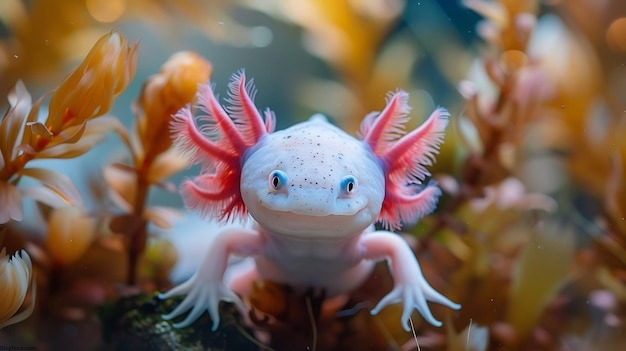Axolotls, also known as “Mexican walking fish,” are a rare species of salamander known for their remarkable regenerative abilities and distinct appearance. However, one of the most intriguing aspects of axolotls is their wide variety of colours, which can captivate both scientists and pet enthusiasts. Understanding the different axolotl colours not only sheds light on their genetics, but it also improves the overall experience for anyone interested in these amazing creatures.
Axolotl Colours: Natural vs. Morph
Axolotls are available in both natural and morph colours, with the natural varieties being wild-type axolotls. These axolotls are typically dark green or brown with speckled markings, making them ideal for camouflage in their natural environment. However, selective breeding has resulted in a variety of morph colours, making axolotls a popular pet choice.
Here’s a breakdown of the most popular axolotl colours:
- Wild Type Axolotl
The wild type is the original and most prevalent axolotl colour found in nature. This axolotl has a dark green or brown body with black spots. Their natural colouring allows them to blend into their surroundings, which is critical for survival in their native lakes in Mexico. The wild type is not as flashy as some of the other morphs, but its natural beauty and robustness make it popular among axolotl enthusiasts.
This results in a bright white or golden-yellow colour. Due to a lack of melanin, their eyes are typically pink or red. Albino axolotls are extremely light sensitive, so owners should keep this in mind when setting up their habitat.
- Leucistic Axolotl.
Leucistic axolotls are among the most popular morphs due to their striking appearance. These axolotls are pale pink or white with dark eyes, giving them a cute, soft appearance. It’s important to note that leucistic axolotls aren’t albino; they have pigment in their eyes, which sets them apart from albino axolotls. - Albino axolotl
Albino axolotls’ skin lacks pigment, leaving it bright white or golden-yellow. Due to a lack of melanin, their eyes are typically pink or red. Albino axolotls are extremely light sensitive, so owners should keep this in mind when setting up their habitat.Melanoid Axolotl.
Melanoid axolotls are the darkest of the axolotl colours, typically appearing black or very dark brown. Melanoids, unlike wild-type axolotls, do not have shiny iridophores, which are cells that reflect light and give the skin a shimmer. This gives them a more matte and solid dark look. - Golden albino axolotl
The golden albino axolotl is a unique and beautiful albino morph. These axolotls have a soft golden-yellow colour, with subtle pink or red tints on their gills. Their shimmering appearance makes them one of the most sought-after colours by breeders and collectors. - Copper Axolotl.
Copper axolotls have a light brown or tan base colour with darker brown spots all over their bodies. This morph is relatively uncommon and is frequently sought after by seasoned axolotl owners. Their colouration is similar to the wild type, but with a lighter, more distinct copper tone.
Genetic Basis of Axolotl Colours
Genetics play a significant role in determining axolotl colours, with different genes controlling pigment distribution and amount. For example, albinism is caused by a lack of melanin, whereas leucism is caused by a reduction in all pigment types. Selective breeding by enthusiasts has resulted in a diverse array of morphs, each with its own distinct appearance. Understanding the genetics of axolotl colours allows breeders to predict which colours will appear in offspring and even create new and interesting variations.
Choosing the Ideal Axolotl Colour for You
When considering an axolotl as a pet, colour is frequently one of the first things potential owners consider. While each axolotl colour has its own appeal, keep in mind that all axolotls, regardless of colour, require the same level of care. Some axolotls, such as albinos, may require more attention to lighting, but the colour you choose is largely a matter of personal preference.
Conclusion: The Beauty of Axolotl Colours.
Whether you prefer the dark, mysterious melanoid axolotls or the soft, pastel hues of the leucistic morph, axolotl colours demonstrate the beauty of nature’s diversity. With so many different colours and patterns to choose from, axolotls provide an intriguing glimpse into the world of genetics and selective breeding. Their diverse range of colours makes them not only scientifically fascinating, but also enjoyable to care for and observe.
To summarise, discovering the various axolotl colours is a delightful journey that adds to the allure of these incredible creatures. Each colour, from wild to golden albino, has its own appeal, making axolotls truly unique in the animal kingdom.
Also Read : Kennedy Funding Ripoff Report: What You Should Know

